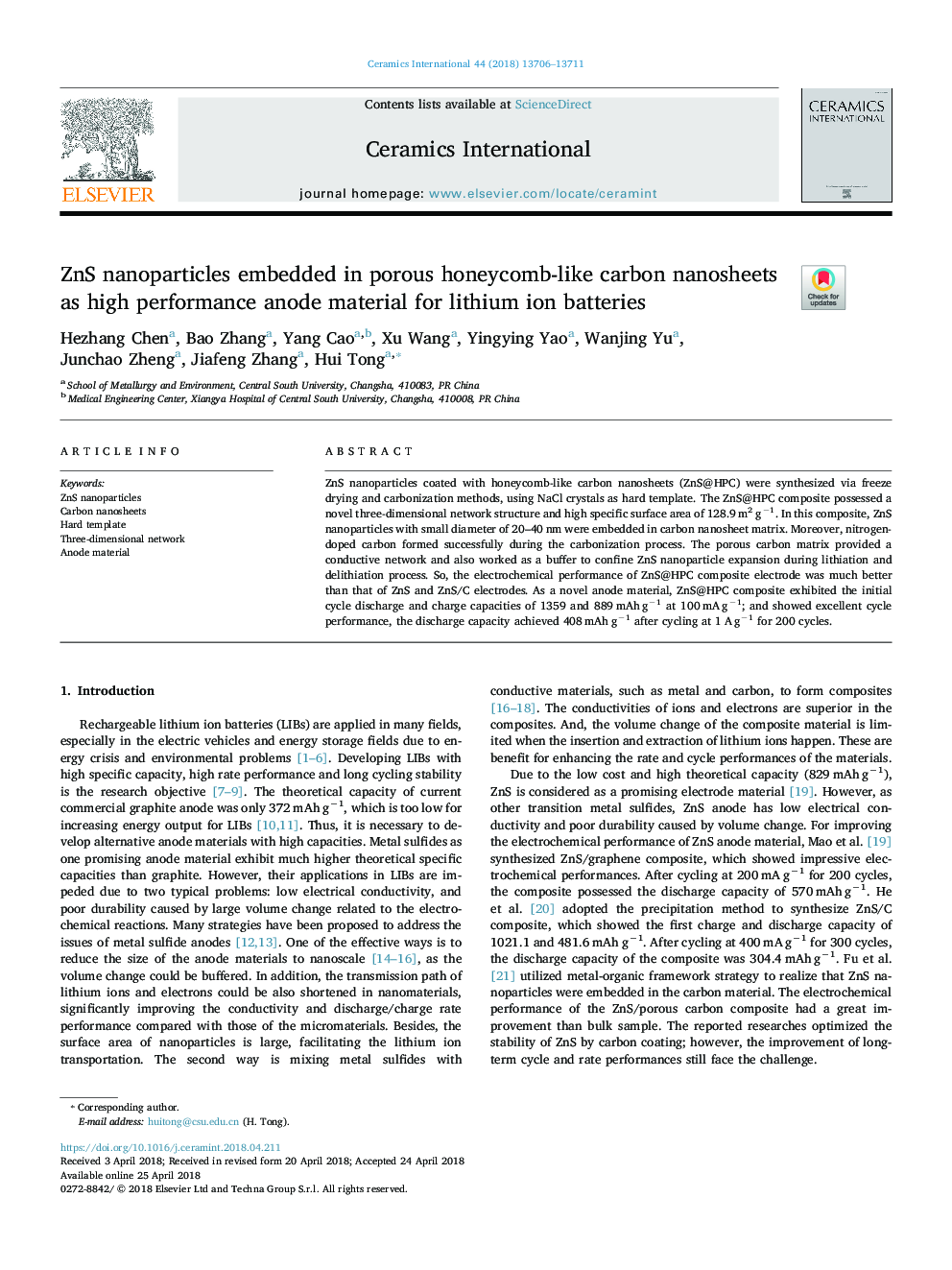| Article ID | Journal | Published Year | Pages | File Type |
|---|---|---|---|---|
| 7886409 | Ceramics International | 2018 | 6 Pages |
Abstract
ZnS nanoparticles coated with honeycomb-like carbon nanosheets (ZnS@HPC) were synthesized via freeze drying and carbonization methods, using NaCl crystals as hard template. The ZnS@HPC composite possessed a novel three-dimensional network structure and high specific surface area of 128.9â¯m2 gâ1. In this composite, ZnS nanoparticles with small diameter of 20-40â¯nm were embedded in carbon nanosheet matrix. Moreover, nitrogen-doped carbon formed successfully during the carbonization process. The porous carbon matrix provided a conductive network and also worked as a buffer to confine ZnS nanoparticle expansion during lithiation and delithiation process. So, the electrochemical performance of ZnS@HPC composite electrode was much better than that of ZnS and ZnS/C electrodes. As a novel anode material, ZnS@HPC composite exhibited the initial cycle discharge and charge capacities of 1359 and 889â¯mAhâ¯gâ1 at 100â¯mAâ¯gâ1; and showed excellent cycle performance, the discharge capacity achieved 408â¯mAhâ¯gâ1 after cycling at 1â¯Aâ¯gâ1 for 200 cycles.
Related Topics
Physical Sciences and Engineering
Materials Science
Ceramics and Composites
Authors
Hezhang Chen, Bao Zhang, Yang Cao, Xu Wang, Yingying Yao, Wanjing Yu, Junchao Zheng, Jiafeng Zhang, Hui Tong,
